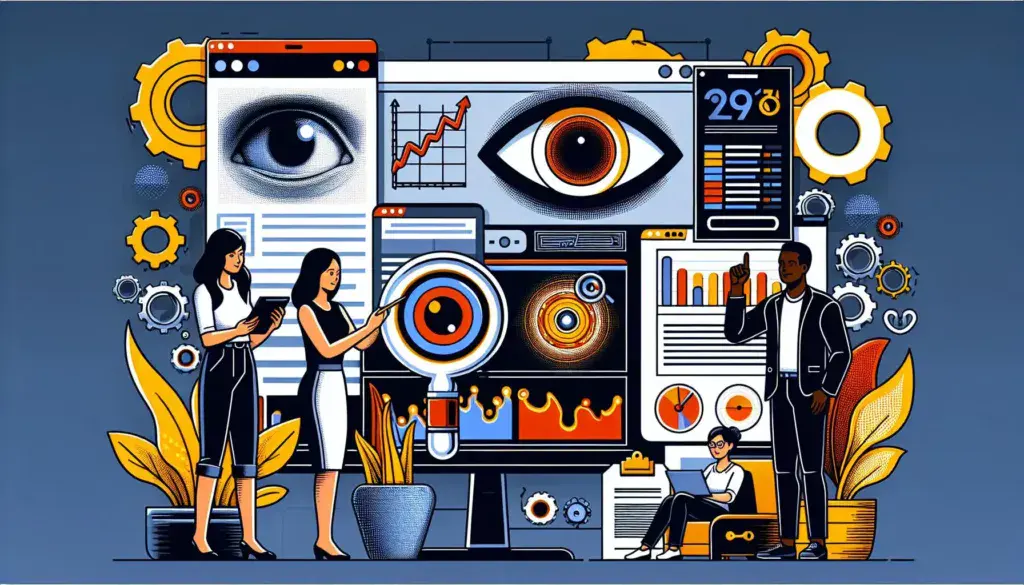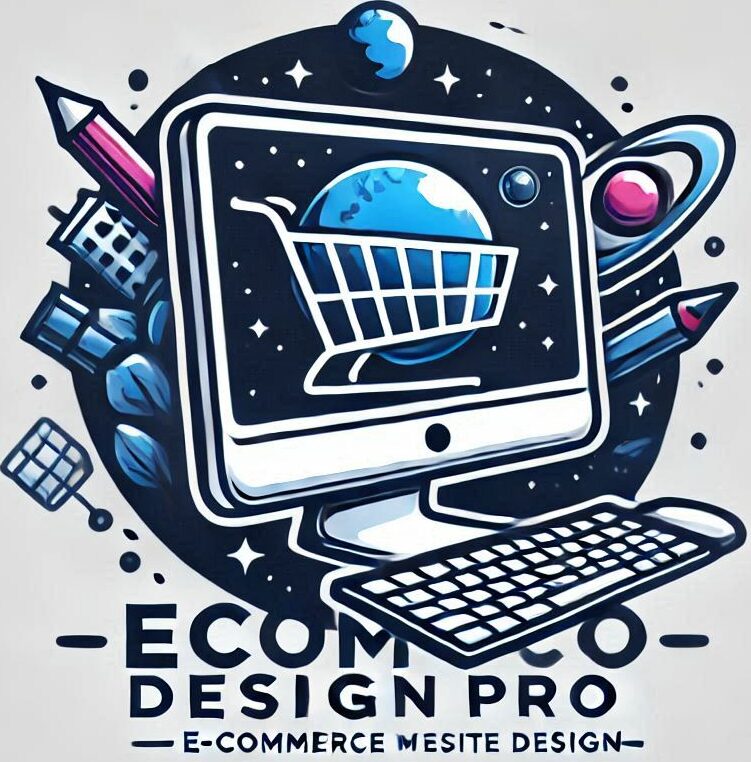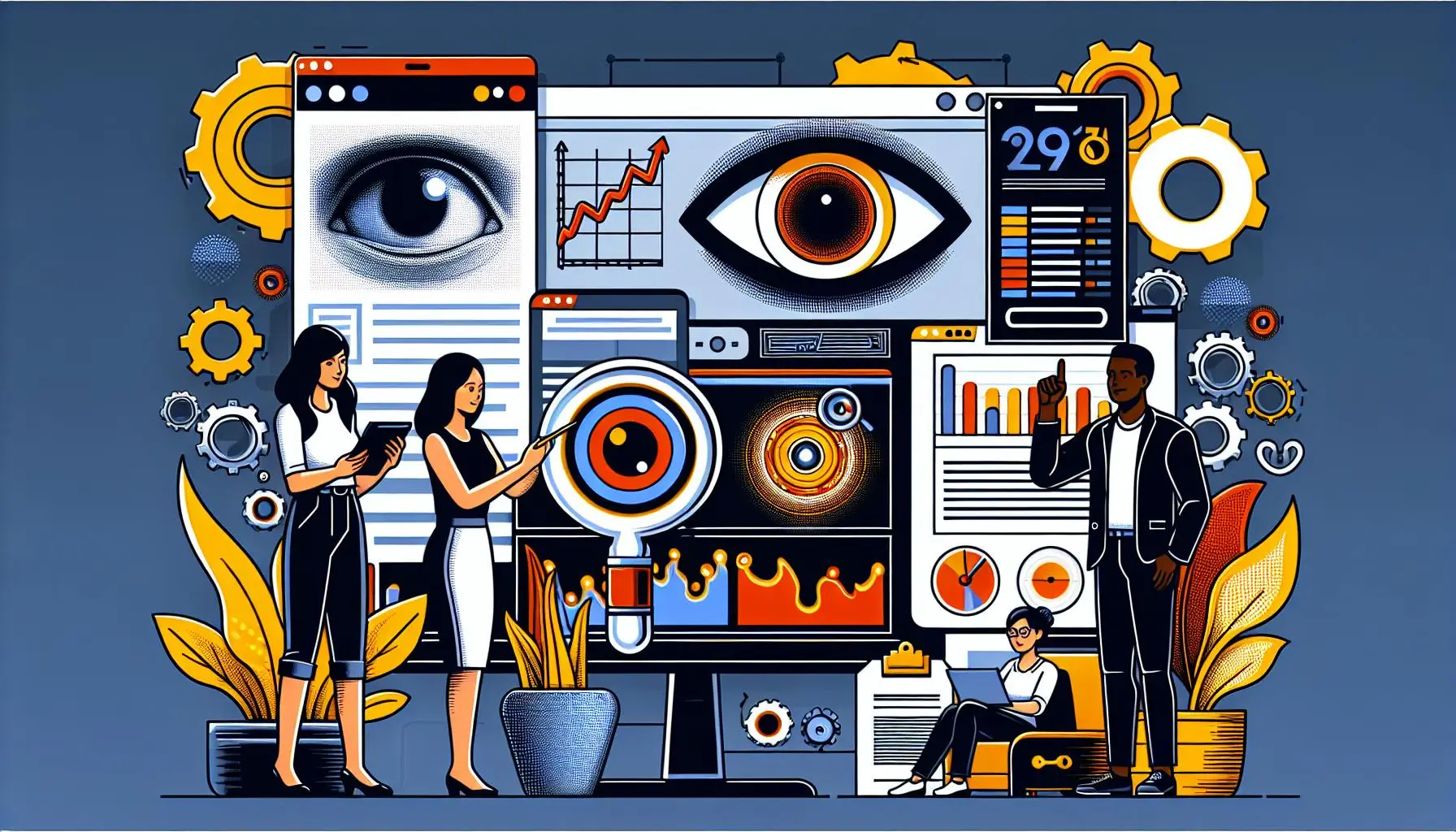
I. Introduction to Eye-Tracking Technology
A. Definition of Eye-Tracking Technology
Eye-tracking technology encompasses various methods and devices that monitor and analyze eye movements to ascertain where a person is looking. This technology captures data on eye behaviors, including fixation points (where the gaze remains stationary), saccades (the quick movements between fixations), and pupil dilation. By deciphering these patterns, researchers and designers can glean valuable insights into visual attention and cognitive processing. Consequently, eye-tracking stands as a powerful tool for enhancing user experience in web design.
B. History and Development of Eye-Tracking Technology
The origins of eye-tracking technology date back to the early 20th century when researchers began investigating the link between eye movements and cognitive functions. Significant advancements occurred in the 1960s and 1970s, leading to the creation of more sophisticated eye-tracking devices, such as remote eye trackers that detect gaze direction without physical contact. The 1990s saw the introduction of computer-based systems, which revolutionized the field by enabling real-time data collection and analysis. Today, the evolution of eye-tracking technology continues, with innovations in mobile eye tracking and integration into augmented and virtual reality applications.
C. Importance of Eye-Tracking in Web Design
Within the sphere of web design, eye-tracking technology is crucial for understanding user interactions with digital content. By analyzing where users look and the duration of their focus on specific elements, designers can pinpoint which aspects of a website capture attention and which may be disregarded. Such insights are invaluable for optimizing layouts, enhancing navigation, and ultimately improving user experience. As the digital landscape grows increasingly competitive, leveraging eye-tracking technology enables designers to create more effective websites that address user needs and foster engagement.
II. How Eye-Tracking Works
A comprehensive understanding of how eye-tracking technology functions is vital for its effective application in web design. This section delves into the various types of eye-tracking devices, methods of data collection, and how to interpret the gathered data.
A. Types of Eye-Tracking Devices
Eye-tracking devices come in several forms, each offering unique features and applications. The primary categories include:
- Remote Eye Trackers: Typically mounted on a screen or monitor, these devices use infrared cameras to detect and record eye movements from a distance. They are non-intrusive, allowing users to interact naturally with the website without physical attachments.
- Mobile Eye Trackers: Worn by participants, often resembling glasses, mobile eye trackers provide insights into how users view content in real-world environments. This makes them suitable for studying user interactions beyond a computer screen.
- Screen-Based Eye Trackers: Integrated directly into displays, these devices provide real-time feedback on user engagement as individuals interact with a website. They are particularly useful in controlled environments for precise data collection.
Each device has its advantages and limitations, influencing the choice of technology based on specific research goals and user contexts.
B. Data Collection Methods
Data collection in eye-tracking studies typically employs various techniques to capture how users direct their attention on a webpage. The most common methods include:
- Fixations: Moments when a user’s gaze remains relatively still on a specific area of the screen. Fixations indicate areas of interest and highlight what captures user attention.
- Saccades: Rapid eye movements between fixations. Analyzing saccades helps to understand the flow of attention and how users navigate through content.
- Heat Maps: Eye-tracking data can be visualized through heat maps, which utilize color coding to represent the frequency of fixations on different areas of a webpage. Warmer colors (like red and yellow) indicate more frequent attention, while cooler colors (like blue and green) show less engagement.
- Gaze Plots: Graphical representations that illustrate the sequence of eye movements, providing insights into how users interact with elements on a page over time.
These methods allow designers to gain a comprehensive understanding of user behavior and preferences.
C. Interpreting Eye-Tracking Data
Interpreting eye-tracking data requires analytical skills and an understanding of user psychology. Key considerations include:
- Identifying Patterns: Analyzing fixations and saccades helps designers recognize patterns in user behavior, such as common pathways through a site and areas that attract or repel attention.
- Contextualizing Findings: It’s essential to consider the context of the study, including the target audience, the goals of the website, and the content being examined. This aids in making informed decisions based on the data.
- Combining with Other Data: Integrating eye-tracking data with other user research methods, such as surveys or usability tests, provides a holistic view of user experience. This multi-method approach enriches analysis and leads to better-informed design choices.
- Continuous Testing: Eye-tracking studies should not be one-time events; ongoing testing and iteration based on insights can lead to continuous improvements in web design and user experience.
By grasping the mechanics of eye-tracking technology, web designers can leverage this powerful tool to create more engaging and user-friendly websites.
III. Applications of Eye-Tracking in Web Design
Eye-tracking technology has become an invaluable asset in web design, offering insights that significantly enhance user experience, improve conversion rates, and facilitate the testing and optimization of layouts. Below, we explore key applications of eye-tracking in web design.
A. Enhancing User Experience
The primary objective of web design is to craft a seamless and enjoyable user experience. Eye-tracking technology enables designers to observe where users focus their attention on a webpage, revealing insights into their behavior and preferences. For instance, heat maps generated from eye-tracking data can help identify which elements attract the most attention, such as headlines, images, and call-to-action buttons.
Understanding visual engagement allows designers to prioritize content placement, ensuring that critical information is positioned where users are most likely to see it. Eye-tracking studies can also uncover navigation pain points, enabling designers to refine menus and layouts for more intuitive user journeys. Ultimately, leveraging eye-tracking insights helps create websites that align closely with user expectations and behaviors, leading to a more satisfying experience.
B. Improving Conversion Rates
Conversion rate optimization is vital for any website, particularly e-commerce platforms and service providers. Eye-tracking technology plays a pivotal role in identifying factors that drive or hinder conversions. By analyzing where users look and how long they linger on specific elements, designers can assess the effectiveness of calls to action, promotional banners, and product displays.
For example, if eye-tracking data reveals that users consistently overlook a particular button or link, designers can experiment with its color, size, or placement to enhance visibility and encourage interaction. Additionally, understanding the visual hierarchy of a page can assist designers in creating a more persuasive narrative that guides users toward desired actions, such as completing a purchase or signing up for a newsletter. Optimizing these key elements based on eye-tracking findings can lead to significant improvements in conversion rates.
C. Testing and Optimizing Layouts
The iterative process of testing and refining layouts is essential for successful web design. Eye-tracking technology facilitates this process by providing empirical data that informs design decisions. Through A/B testing, designers can evaluate different layout variations and determine which design captures users’ attention more effectively.
For instance, by comparing two versions of a landing page, designers can analyze eye-tracking data to assess which elements draw users in and lead to higher engagement levels. This data-driven approach allows for evidence-based design choices, reducing reliance on intuition or guesswork. Additionally, eye-tracking can highlight areas of confusion or distraction, enabling designers to remove or modify elements that detract from the overall user experience.
In summary, the applications of eye-tracking technology in web design are multifaceted, extending from enhancing user experience to driving conversions and optimizing layouts. As designers continue to harness these insights, they can create more effective, user-centered websites that fulfill both business goals and user needs.
IV. Future Trends in Eye-Tracking Technology
The landscape of eye-tracking technology is continuously evolving, driven by advancements in artificial intelligence, machine learning, and the growing demand for user-centric design in web development. As these technologies converge, new possibilities and applications are emerging that could revolutionize how designers and marketers approach user engagement online.
A. Integration with AI and Machine Learning
One promising trend in eye-tracking technology is its integration with artificial intelligence (AI) and machine learning algorithms. By harnessing AI’s capabilities, eye-tracking systems can analyze vast amounts of data in real-time, providing insights previously unattainable. For example, machine learning can help predict user behavior based on eye movement patterns, allowing designers to create more personalized experiences. This predictive capability can lead to dynamic web layouts that adapt based on user preferences or attention spans, ultimately enhancing satisfaction and engagement.
Moreover, AI-driven eye-tracking technologies can automate visual attention analysis, enabling designers to quickly identify which webpage elements capture the most interest. This streamlining of the design process allows for rapid iterations and better-informed decision-making.
B. Potential Ethical Considerations
As eye-tracking technology advances, it raises important ethical considerations that must be addressed. The ability to closely monitor and analyze users’ visual attention may lead to privacy and consent concerns. Users might feel uncomfortable knowing their eye movements are being tracked, even if the data is used to enhance their experience.
Additionally, there is a risk of manipulation. If web designers and marketers utilize eye-tracking data to exploit cognitive biases or steer users toward specific actions, it could lead to unethical practices. Thus, it is crucial for the industry to establish clear ethical guidelines and ensure transparency in how eye-tracking data is collected and used. Balancing innovation with ethical responsibility will be essential as the technology continues to evolve.
C. Emerging Use Cases in Web Design
Beyond enhancing user experience and improving conversion rates, eye-tracking technology is paving the way for innovative applications in web design. One emerging use case is in the realm of accessibility. Eye-tracking can help develop more inclusive web interfaces for users with disabilities, allowing them to navigate websites using their eye movements alone. This could significantly improve access to information and services for individuals who may struggle with traditional input devices.
Another exciting application lies in augmented reality (AR) and virtual reality (VR). As AR and VR technologies gain traction in web design, eye-tracking will play a critical role in creating immersive experiences. By understanding where users look within a 3D environment, designers can optimize content placement and interaction, leading to more engaging and effective virtual experiences.
In summary, the future of eye-tracking technology in web design is promising, with the potential to transform user experiences in ways we have only begun to explore. By embracing the integration of AI, addressing ethical considerations, and exploring new use cases, the industry can harness the full power of eye-tracking technology to create more intuitive and impactful web designs.
V. Conclusion
In conclusion, eye-tracking technology has emerged as a powerful tool in web design, providing valuable insights into user behavior and preferences. By understanding how users interact with visual content, designers can create more engaging and intuitive experiences that cater to their audience’s needs. The history and evolution of eye-tracking have paved the way for its integration into various design processes, underscoring its significance in optimizing websites for enhanced usability and conversion rates.
As discussed, the mechanics of eye-tracking involve sophisticated devices and data interpretation methods that yield actionable feedback for web designers. The applications of this technology extend beyond aesthetics; they play a critical role in refining user experiences, boosting engagement, and ultimately driving business success.
Looking ahead, the future of eye-tracking technology in web design is bright, with promising advancements such as the integration of artificial intelligence and machine learning. However, as with any rapidly evolving technology, it’s essential to remain aware of the ethical implications and privacy concerns that may arise. As eye-tracking becomes more prevalent in design practices, finding a balance between innovation and ethical responsibility will be paramount.
Embracing eye-tracking technology not only enhances the design process but also fosters a deeper understanding of user interactions. As web design continues to evolve, leveraging these insights will be key to creating compelling digital experiences that resonate with users and meet the demands of an ever-changing online landscape.



